- Home
- Ashley, Mike;
The Mammoth Book of Perfect Crimes & Impossible Mysteries
The Mammoth Book of Perfect Crimes & Impossible Mysteries Read online
MIKE ASHLEY is an author and editor of over eighty books, including many Mammoth titles. He worked for over thirty years in local government but is now a full-time writer and researcher specializing in ancient history, historical fiction and fantasy, crime and science fiction. He lives in Kent with his wife and over 20,000 books.
Also available
The Mammoth Book of 20th Century Science Fiction
The Mammoth Book of Best New Erotica 5
The Mammoth Book of Best New Horror 17
The Mammoth Book of Best New Science Fiction 19
The Mammoth Book of British Kings & Queens
The Mammoth Book of Celtic Myths and Legends
The Mammoth Book of Fighter Pilots
The Mammoth Book of the Funniest Cartoons of All Time
The Mammoth Book of Great Detective Stories
The Mammoth Book of Great Inventions
The Mammoth Book of Hearts of Oak
The Mammoth Book of Heroes
The Mammoth Book of Historical Whodunnits
The Mammoth Book of How It Happened
The Mammoth Book of How It Happened: America
The Mammoth Book of How It Happened: Ancient Egypt
The Mammoth Book of How It Happened: Ancient Rome
The Mammoth Book of How It Happened: Battles
The Mammoth Book of How It Happened: In Britain
The Mammoth Book of How It Happened: Everest
The Mammoth Book of How It Happened: Naval Battles
The Mammoth Book of How It Happened: World War I
The Mammoth Book of How It Happened: World War II
The Mammoth Book of International Erotica
The Mammoth Book of Jack the Ripper
The Mammoth Book of Jokes
The Mammoth Book of Maneaters
The Mammoth Book of Mountain Disasters
The Mammoth Book of Native Americans
The Mammoth Book of New Terror
The Mammoth Book of New Jules Verne Adventures
The Mammoth Book of Private Eye Stories
The Mammoth Book of Prophecies
The Mammoth Book of Pulp Action
The Mammoth Book of Roaring Twenties Whodunnits
The Mammoth Book of Roman Whodunnits
The Mammoth Book of SAS & Special Forces
The Mammoth Book of Seriously Comic Fantasy
The Mammoth Book of Sex, Drugs & Rock ’n’ Roll
The Mammoth Book of Sorcerers’ Tales
The Mammoth Book of Space Exploration and Disasters
The Mammoth Book of Special Forces
The Mammoth Book of Shipwrecks & Sea Disasters
The Mammoth Book of Sword and Honour
The Mammoth Book of The Edge
The Mammoth Book of Travel in Dangerous Places
The Mammoth Book of True War Stories
The Mammoth Book of UFOs
The Mammoth Book of Vampires
The Mammoth Book of War Correspondents
The Mammoth Book of Women Who Kill
The Mammoth Encyclopedia of Extraterrestrial Encounters
The Mammoth Encyclopedia of Modern Crime Fiction
The Mammoth Encyclopedia of Unsolved Mysteries
London Constable & Robinson Ltd
3 The Lanchesters
162 Fulham Palace Road
London W6 9ER
www.constablerobinson.com
First published in the UK by Robinson,
an imprint of Constable & Robinson Ltd 2006
Collection and editorial material copyright © Mike Ashley 2006
All rights reserved. This book is sold subject to the condition that it shall not, by way of trade or otherwise, be lent, re-sold, hired out or otherwise circulated in any form of binding or cover other than that in which it is published and without a similar condition including this condition being imposed on the subsequent purchaser.
A copy of the British Library Cataloguing in
Publication Data is available from the British Library.
ISBN-13: 978-1-84529-337-6
ISBN-10: 1-84529-337-1
eISBN: 978-1-78033-359-5
Printed and bound in the EU
1 3 5 7 9 10 8 6 4 2
Contents
Copyright & Acknowledgments
Perfectly Impossible, Mike Ashley
An Almost Perfect Crime, William F. Smith
The X Street Murders, Joseph Commings
Locked in Death, Mary Reed & Eric Mayer
Wingless Pegasus, Gillian Linscott
Duel of Shadows, Vincent Cornier
The 45 Steps, Peter Crowther
Contrary to the Evidence, Douglas Newton
The Impossible Footprint, William Brittain
Three Blind Rats, Laird Long
Death and the Rope Trick, John Basye Price
The Problem of the Black Cloister, Edward D. Hoch
A Shower of Daggers, Edward D. Hoch
The Hook, Robert Randisi
The Mystery of the Sevenoaks Tunnel, Max Rittenberg
The Red Ring, William Le Queux
Observable Justice, Will Murray
On the Rocks, J. A. Konrath
Eternally Yours, H. Edward Hunsburger
Murder in Monkeyland, Lois Gresh & Robert Weinberg
No Killer Has Wings, Arthur Porges
Benning’s School for Boys, Richard A. Lupoff
The Episode of the Nail and the Requiem, C. Daly King
The Impossible Murder of Dr Satanus, William Krohn
The Stuart Sapphire, Peter Tremayne
The Flung-Back Lid, Peter Godfrey
The Poisoned Bowl, Forrest Rosaire
Proof of Guilt, Bill Pronzini
Slaughterhouse, Barry Longyear
The Birdman of Tonypandy, Bernard Knight
Copyright and Acknowledgments
Every effort has been made to trace holders of copyright. In the event of any inadvertent infringement, please contact the editor via the publisher. I would like to thank Douglas G. Greene, Steve Lewis and John Herrington for their help in tracing authors or their estates.
“The Impossible Footprint” © 1974 by William Brittain. First published in Alfred Hitchcock’s Mystery Magazine, November 1974. Reprinted by permission of the author.
“The X Street Murders” © 1962 by Joseph Commings. First published in Mystery Digest, March/April 1962. Reprinted by permission of the Diocese of St Petersburg, Florida, on behalf of the author’s estate.
“Duel of Shadows” © 1934 by Vincent Cornier. First published in Pearson’s Magazine, April 1934. Reprinted by permission of the author’s estate.
“The 45 Steps” © 2006 by Peter Crowther. First publication, original to this anthology. Printed by permission of the author and the author’s agent, John Jarrold.
“The Flung-Back Lid” © 1979 by Peter Godfrey. First published in John Creasey’s Crime Collection 1979, edited by Herbert Harris (London: Gollancz, 1979). Reprinted by permission of the author’s estate.
“Murder in Monkeyland” © 2006 by Lois Gresh and Robert Weinberg. First publication, original to this anthology. Printed by permission of the authors.
“A Shower of Daggers” © 1997 by Edward D. Hoch. First published in Ellery Queen’s Mystery Magazine, June 1997. “The Problem of the Black Cloister” © 2004 by Edward D. Hoch. First published in Ellery Queen’s Mystery Magazine, December 2004. Both reprinted by permission of the author.
“Eternally Yours” © 1985 by H. Edward Hunsburger. First published in Alfred Hitchcock’s Mystery Magazine, September 1985. Reprinted by permission of t
he author.
“The Episode of the Nail and the Requiem” © 1935 by C. Daly King. First published in Mystery, March 1935. Reprinted by permission of the author’s estate.
“The Birdman of Tonypandy” © 2006 by Bernard Knight. First publication, original to this anthology. Printed by permission of the author.
“On the Rocks” © 2004 by J. A. Konrath. First published in Ellery Queen’s Mystery Magazine, July 2004. Reprinted by permission of the author.
“The Impossible Murder of Dr Satanus” © 1965 by William Krohn. First published in Ellery Queen’s Mystery Magazine, April 1965. Reprinted by permission of the author.
“The Red Ring” by William Le Queux, first published in The Grand Magazine, January 1910. Copyright expired in 1978.
“Wingless Pegasus” © 1996 by Gillian Linscott. First published in Ellery Queen’s Mystery Magazine, August 1996. Reprinted by permission of the author.
“Three Blind Rats” © 2006 by Laird Long. First publication, original to this anthology. Printed by permission of the author.
“Slaughterhouse” © 1979 by Barry Longyear. First published in Alfred Hitchcock’s Mystery Magazine, July 1979. Reprinted by permission of the author.
“Benning’s School for Boys” © 2006 by Richard A. Lupoff. First publication, original to this anthology. Printed by permission of the author.
“Observable Justice” © 2006 by Will Murray. First publication, original to this anthology. Printed by permission of the author.
“Contrary to the Evidence” © 1935 by Douglas Newton. First published in Pearson’s Magazine, January 1936. Reprinted by permission of the author’s estate.
“No Killer Has Wings” © 1960 by Arthur Porges. First published in Alfred Hitchcock’s Mystery Magazine, January 1961. Reprinted by permission of the author.
“Death and the Rope Trick” © 1954 by John Basye Price. First published in London Mystery Magazine #21, 1954. Unable to trace the author’s estate.
“Proof of Guilt” © 1973 by Bill Pronzini. First published in Ellery Queen’s Mystery Magazine, December 1973. Reprinted by permission of the author.
“The Hook” © 2006 by Robert Randisi. First publication, original to this anthology. Printed by permission of the author.
“Locked in Death” © 2006 by Mary Reed and Eric Mayer. First publication, original to this anthology. Printed by permission of the authors.
“The Mystery of the Sevenoaks Tunnel” by Max Rittenberg, first published in The London Magazine, October 1913. Reprinted by permission of the author’s estate.
“The Poisoned Bowl” © 1939 by Forrest Rosaire. First published in Clues, April 1939. No record of copyright renewal or of author’s estate.
“An Almost Perfect Crime” © 1987 by William F. Smith. First published in Alfred Hitchcock’s Mystery Magazine, April 1987. Reprinted by permission of the author
“The Stuart Sapphire” © 2006 by Peter Tremayne. First publication, original to this anthology. Printed by permission of the author and the author’s agent, A.M. Heath & Co.
Perfectly Impossible
Mike Ashley
Welcome to my second anthology of impossible crimes and seemingly unsolvable mysteries. If you’ve read the first, The Mammoth Book of Locked-Room Mysteries and Impossible Crimes, you’ll have some idea what to expect. There’s a fair amount of the same here – but this time there’s an extra twist. I’ve included some seemingly perfect crimes as well.
Of course the true perfect crime would have been undetectable. There may have been many committed over the centuries, we’d just never know. They might have been regarded as accidents or disappearances or utterly unsolvable.
It’s that unsolvable part where the perfect crime meets the impossible one and where I’ve had some fun in selecting the stories for this anthology. You’ll find some impossible crimes that were far from perfect, and you’ll find a few perfect crimes that weren’t really impossible, but you’ll also find plenty that are both – or as close as you’ll get. It’s not much fun if the police or detectives are completely baffled. The delight in these stories is unravelling the puzzle and trying to work out what on earth happened.
Here are some of the puzzles you’ll encounter:
a man alone in an all – glass phone booth, clearly visible and with no one near him, is killed by an ice pick.
a man sitting alone in a room is shot by a bullet fired only once and that was over 200 years ago.
a man enters a cable-car carriage alone and is visible the entire journey but is found dead when he reaches the bottom.
a man vanishes at the top of the Indian rope trick and is found dead miles away.
a dead man continues to receive mail in response to letters apparently written by him after he’d died.
There are plenty more like those. We start the anthology with a crime so impossible that it’s damned near perfect, and end with one that is so perfect that it’s impossible to solve.
As ever the anthology includes several brand new stories never previously published, plus a range of extremely rare stories, many never reprinted since their first appearance in increasingly rare magazines. This time I’ve avoided using any stories by the more obvious authors. Most of the works of John Dickson Carr (whose centenary coincides with the publication of this book), or Jacques Futrelle, for instance, are either in print or may easily be found on the second-hand market. The same applies to the Father Brown stories by G.K. Chesterton, many of which fall into the “impossible mystery” field. Instead I’ve gone for the rare and ingenious.
The task would have been far harder had it not been for Robert Adey’s invaluable reference work Locked Room Murders (second edition, 1991), which I would recommend to all devotees of the baffling and unsolvable. I must also thank Steve Lewis, whose additions to Adey’s compendium also proved invaluable. Generally, in both this volume and my earlier one, I have avoided stories previously included in anthologies. Anthologies of impossible mysteries are rare, so for those interested I would heartily recommend the following: The Art of the Impossible by Jack Adrian and Robert Adey (1990), Death Locked In by Douglas G. Greene and Robert Adey (1987), Tantalizing Locked Room Mysteries by Isaac Asimov, Charles G. Waugh and Martin Greenberg (1982), Whodunit? Houdini? by Otto Penzler (1976) Locked Room Puzzles by Martin Greenberg and Bill Pronzini (1986), and All But Impossible! by Edward D. Hoch (1981).
That’s more than enough to set your brain reeling. So settle down, get your deductive powers honed and see if you can solve the perfectly impossible.
Mike Ashley
February 2006
An Almost Perfect Crime
William F. Smith
We start with one of those utterly baffling mysteries that keeps you guessing right to the end. William Smith (b. 1922) is a long-time fan of crime and mystery fiction, but only got round to selling stories late in his career, having spent over forty years as a high-school teacher of French, German and English. He started by selling brief, clever little poems, called “Detectiverse” to Ellery Queen’s Mystery Magazine in 1980 and then the occasional story, including “Letter Perfect”, which won a story competition in Alfred Hitchcock’s Mystery Magazine in 1992. A methodical craftsman, William’s output is small – six stories in all – but each one perfectly formed, as this one demonstrates.
“According to six eyewitnesses,” said Captain Jack Parker, handing a manila folder to Detective Sergeant Raymond Stone, “a man named Richard Townsend entered a telephone booth last night, closed the door, and toppled dead a few minutes later with an ice pick in his back. Crazy, huh?”
Stone grunted a monosyllabic affirmative. “Are you sure it’s murder?”
“A blade in the back usually is. Read the report Paul Decker turned in. You know him. Meticulous.”
“Why don’t you keep him on it?” Stone suggested.
“He prefers to stick to the night shift. Decker’s excellent at accumulating details, but he’s not keen on these brain busters. He thought you might be bet
ter suited to solve this one. So do I. I’ve notified Curtis and Lissner to report to you.”
Parker returned to his office, leaving Stone to glean the salient facts from the report, which was a typical Decker job, complete with a detailed account of the crime, statements of eyewitnesses, photographs, charts showing the location of the booth, and its exact description and measurements. The works.
Stone marveled at the thoroughness of the report. He skimmed through to familiarize himself with the details. A large number of fingerprints had been found both outside and inside the booth, but only Townsend’s were on the phone itself. Decker had noted that the usual litter – candy wrappers, cigarette butts, soda pop cans, and so on – was outside the booth. Each item found inside was listed separately. There were two crumpled Doublemint gum wrappers, a foot long piece of dirty string, a Dr Pepper bottle cap, a scrap of paper with a grocery list written on it, one Lucky Strike stub, and a two inch piece of shiny black electrical tape that had been found stuck to the glass at the bottom of the booth. Decker had made the notation that the tape probably had been left by the telephone repairman who serviced the booth just prior to Townsend’s using it.
The death weapon was an ice pick with a blade four and three-quarter inches long, set in a round wooden handle a fraction over one half inch in diameter and four and a half inches long. The ice pick was in the folder, and Stone noted that although the handle was newly painted with shiny red enamel, the blade showed signs of years of use. It was an excellent homemade job, perhaps manufactured especially for the murder.
The results of the post mortem were not in yet, but the medical examiner had speculated that death had probably been the result of a puncture wound through the heart. The pick had penetrated just below the left shoulder blade in a manner virtually impossible for it to have been self-inflicted. The photographs showed Townsend twisted in a heap on the floor, the handle of the weapon clearly visible in his back. The fold-in door was completely closed and held in place by the victim’s body. The door had had to be taken off so that Townsend could be removed.

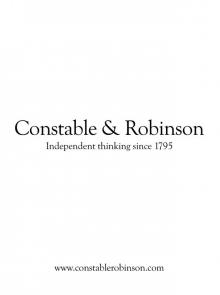 The Mammoth Book of Extreme Science Fiction
The Mammoth Book of Extreme Science Fiction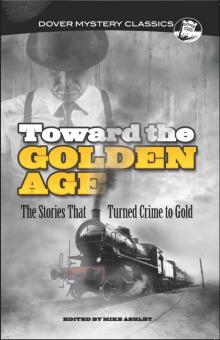 Toward the Golden Age
Toward the Golden Age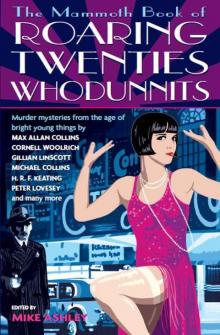 The Mammoth Book of Roaring Twenties Whodunnits (Mammoth Books)
The Mammoth Book of Roaring Twenties Whodunnits (Mammoth Books)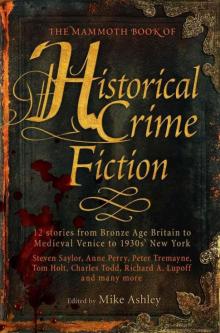 The Mammoth Book of Historical Crime Fiction
The Mammoth Book of Historical Crime Fiction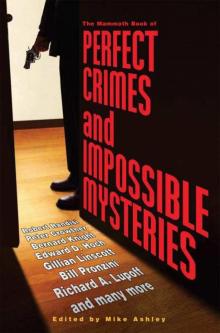 The Mammoth Book of Perfect Crimes & Impossible Mysteries
The Mammoth Book of Perfect Crimes & Impossible Mysteries